Point Pricing, Our New Marketing Agency Pricing Model

Clients deserve to know the precise value of marketing services agencies deliver. Traditional pricing models include commissions, fixed rates and billable hours.
While there is inherently nothing wrong with any style of billing an agency and client agree on, not all are equal. At Chatter Buzz, we believe that as our technology evolves, so does the way we bill.
Paul Roetzer discovered that
[the]…billable-hour model was a flawed, archaic, agency-centric system that wrongly tied agency performance to outputs, not outcomes.
I couldn’t agree more and that’s why I’m excited to announce our decision to make the switch to point pricing.
Point pricing is a unique pricing structure where every asset is assigned a set amount of points and every point therein equals a set value. In our case, 1 point = 1 hour.
This way, based on your point allowance per month, you’ll know exactly what assets you can expect to receive. It’s the clearest way to help clients understand what they’re getting based on the budget they’ve dedicated to marketing expenditures.

As an agency owner, I often find companies hiring digital agencies because their billable hour is less than average (a lot less). Not necessarily based on the value they bring or the output they provide. All the clients can think off is that billable hour.
That’s why at Chatter Buzz, we eliminated hourly billing overall.
So far, our clients seem to love the switch. They enjoy knowing up front the services they can afford with us and what type of assets they can expect to receive from their budget.
Point pricing, while easy to understand is a new way of doing things.
If you’re more comfortable with traditional pricing structures, read on for a short review of the most common forms of agency pricing. Consider how they differ and decide for yourself what’s best for you.
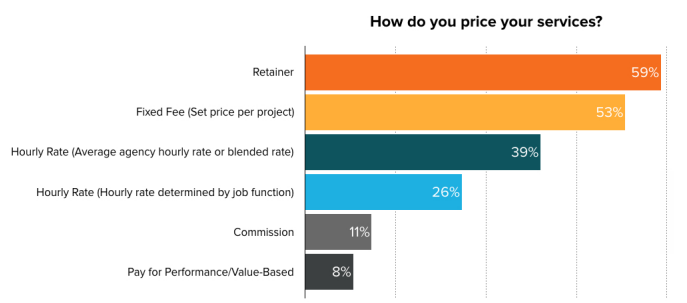
Let’s take a look.
1. Hiccups in the Hourly-Rate Pricing Model
Most agencies bill hourly, and we recently used this structure too.
In most cases, an agency determines an agency-wide hourly rate (also known as a blended rate), or it charges by the hourly rates of specific employees whose rates differ based on seniority/talent.
The beauty of hourly billing is that clients pay for jobs by the hour and receive the work when it’s finished.
Simple, right?
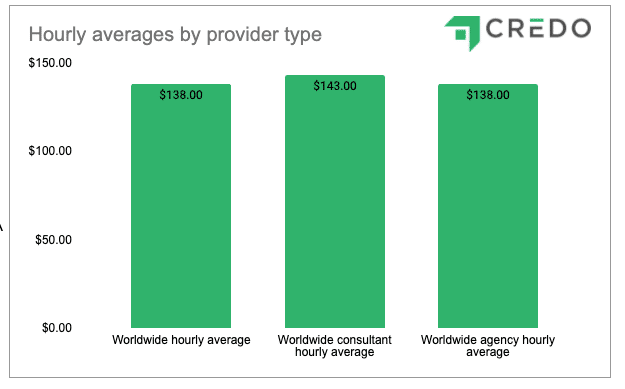
One of the main challenges of hours-based pricing is estimating how long work takes. Basic statistics prove that the larger the estimate (of anything), the more inaccurate.
And the same is true when estimating how many hours it takes agency x to complete project y.
Why is that?
It’s almost impossible to predict how long jobs will take. Let’s say you hire an agency to produce a series of press releases for an upcoming product launch.
The actual production of that job probably falls on the desk of a junior copywriter. If your industry is one that the copywriter has little domain expertise in, then research will be required to complete initial drafts.
Furthermore, there are several revision rounds and senior-level edits your work will need before it is delivered to you.

Guess who pays for all those revisions? You do.
With point pricing, the agency eats the cost of any extra tasks and hours required to complete your assets.
All you pay for is the work.
2. The Flaws of the Fixed-Fee or Project-Based Pricing Model
Fixed rate pricing is the most similar to point pricing.
The fixed-fee pricing model provides an estimate of a project by determining the number of hours required by the project and the hourly rate per employee or agency’s blended rate. Typically a buffer fee or margin is also added.
This fixed amount is billed to the client in increments (25% or 50% upfront and the final amount due at the completion of the project).
Under this structure, jobs are a fixed dollar amount and clients know up front how much jobs cost.
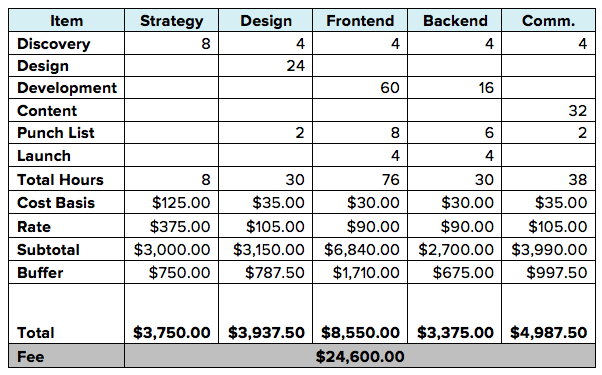
What is unclear under in this model is what actual assets are assigned under jobs.
For example, a client could hire an agency to run their Facebook page(s) at a cost of x/month.
But for the price of x, what assets does the client receive? Do they get an editorial calendar? Are graphics included? How about revision rounds and the chance to deliver feedback?
You can see how this ends.
In addition, projects change and evolve as the agency and the client begin the work. The agency’s estimate can become inaccurate very quickly, which requires the firm to submit additional bills to the client.

And due to this, the agency doesn’t want to suggest new and novel ideas — things that would improve the final outcome and results for the client.
This model can also be limiting for the relationship.
Fixed rate pricing, while closer to being more precise, still leaves a lot to be guesstimated that the client ends up paying for.
3. Is the Subscription Pricing Model Better
It is the goal of every business to have a predictable, recurring revenue stream.
Subscription-based billing works the same for agencies, streaming services or products — every month you pay x for access to y.
In a perfect world without much change and fluctuation, this is ideal. The reason this model works for products and some services is that there are many places in life where you desire the same thing.

But, in the ever-changing world of marketing, what may deliver the highest ROI in one quarter may not work so well in another.
Therefore you should constantly qualify the success of your marketing campaigns and respond.
When Facebook or Google change an algorithm, do you want your agency to deliver the same service they’ve always delivered? Not if you’re smart.
There’s a reason a client should be able to select services based on their needs, not the agencies desire to have recurring revenue.
4. The Commission Based Pricing Model
The oldest, most traditional way of pricing is one you may recognize if you’re familiar with the wildly popular, “pour yourself an afternoon whiskey” show, Mad Men.

In the Golden Age of advertising, agencies pitched and competed for work. When they won the work, they handled every facet of producing it – copy, design, media placement and beyond.
Traditionally, 20% was the agency commission rate which meant that if a TV advertisement cost $10,000, the agency charged $20,000 for the work.
This structure supported print advertising at a time when agencies did most campaign work by hand.
Commission based pricing is still used in a few agencies for large-scale advertising. But there are obvious inconsistencies associated with charging for work this way. Arbitrary mark-ups on work and an inability to determine which jobs you’re actually paying for are some of the most common issues.
5. The Point Pricing Model, A New Solution
At Chatter Buzz, transparency is a part of our process. It’s our aim in everything we do to help clients understand clearly just what they’re getting for what they pay for.
Point pricing assures our clients get the full value of every investment, regardless of how much time it takes to deliver.
Points, which represent a fixed unit of value (ex. 1 point = 1 hour), are applied at the account level and allocated monthly based on the current scope of work and deliverables.
Campaign points, which represent a fixed unit of time-based on the deliverables (e.g. blog post = 3 points), are applied at the project level and allocated monthly based on the deliverables.
It does not lend toward checking emails, weekly or monthly web meetings or travel time.
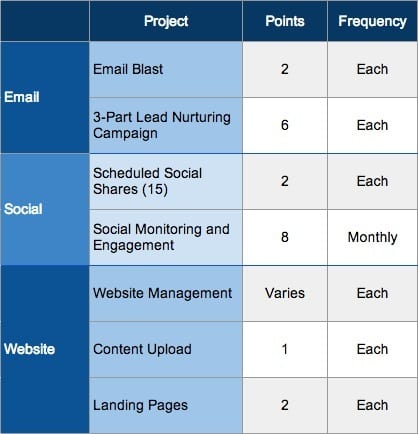
Points provide total transparency into pricing, progress, performance and resource allocation.
They provide a greater transparency and value. Points remove the unpredictability associated with hourly billing.
Regardless of how long it actually takes to create deliverables and perform services, point values remain consistent.
Also, you know at all times the points available for the month, and how additional projects work into that month’s allocated amount. Points represent the true value of a particular deliverable or service—not the amount of time it takes agency staff to deliver.
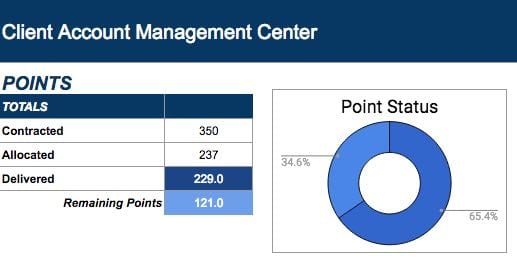
Point allocations are defined at the start of every month and are based on an agreed-upon scope.
This allows for more efficient and accurate forecasting and planning.
Conclusion
At Chatter Buzz, our goal is to make sure that we show the value we provide through transparency and data. Point pricing allows us to confidently charge for services.
It allows us to focus on our clients’ needs and goals, with clearly defined costs and benefits. Because we understand that prices should be value-based, not abstract.
With each point – that clearly defined and fixed unit of value – we can ensure clients get the full value of every dollar being spent, regardless of how much time it takes to deliver.
If you want to learn more about Point Pricing, feel free to contact us.
Do you need someone to help you achieve your growth goals - then let us help you crush them? Let's chat!
Error: Contact form not found.









